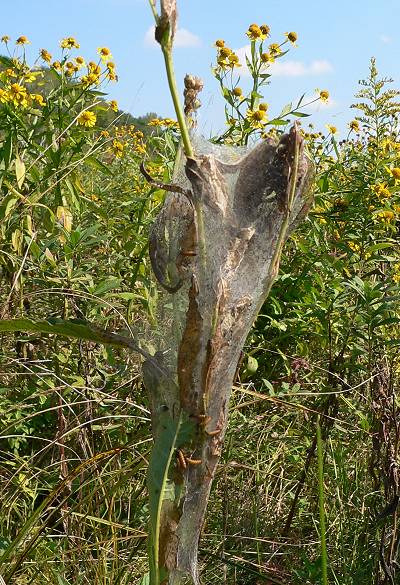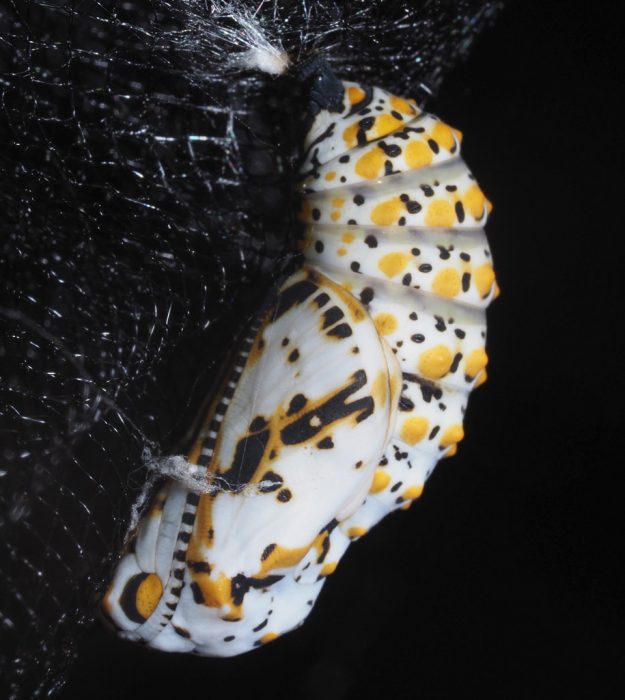Caterpillar foods: plants that caterpillars will eat after hatching and before hibernating are turtlehead (Chelone glabra), hairy beardtongue (Penstemon hirsutus), English plantain (Plantago lanceolata), and false foxglove (Aureolaria); after overwintering caterpillars may feed on other plants including arrowwood (Viburnum recognitum), common lousewort (Pedicularis canadensis), Japanese honeysuckle (Lonicera japonica), white ash (Fraxinus americana) (BAMONA) Also Swamp Lousewort (Pedicularis lanceolata) and Veronica (personal observation)
Adults fly in June and July here. Young caterpillars build a nest on Turtlehead where they shelter and feed communally. These young caterpillars hibernate. Then, the following spring they feed independently on Turtlehead and other plants.
6/22/2014
6/29/2013
7/11/2008 nectaring on Wild Parsnip
8/24/2009 small nest in Turtlehead flowerhead
9/20/2005 caterpillars eating on the outside of a nest
9/20/2005
8/24/2009 nest
9/26/2009 a nest closer to the ground – but also on Turtlehead
9/26/2009 nest built between sedge leaves
9/26/2009 sedge nest
5/24/2014 older larva
6/8/2008 older larva on Pedicularis lanceolata
6/12/2006 older larva eating Plantain
6/16/2009 older larvae on Pedicularis lanceolata
6/16/2018 Chrysalis
6/16/2018 Chrysalis
6/30/2013 During late June and July we see many Baltimore Checkerspots on our driveway. On this day I counted 465 Baltimore Checkerspots. (Also in the photo: Northern Crescents, Silvery Checkerspots and a Great Spangled Fritillary.)

















